Life-Saving Health Checks
The earlier you spot a potential health problem, the better you can control it. These simple health tests could have saved your life…..

Have Your Cholesterol Checked:
Most of us these days have high cholesterol, which can increase the risk of heart disease and stroke. A cholesterol test can measure the levels of “bad” LDL (low density lipoprotein) cholesterol, beneficial HDL (High-density lipoprotein) cholesterol and other fats in our blood. It calculates both total cholestrol and the ratio of beneficial to harmful cholesterol. But cholesterol is just one risk factor for cardiovascular disease, and it’s best to ask your doctor for a full assessment – not just cholesterol, but also your age, sex, blood pressure, family history, diet, weight, whether you have diabetes or are a smoker, and how regularly you exercise, because it’s the combination of factors that will predict your overall risk. If your cholesterol is high, the GP may suggest certain lifetsyle changes and prescribe a few medicines.

Know Your Blood Pressure:
You can’t see it, and you probably won’t feel it, because high blood pressure rarely has any symptoms – but can be a killer. Thousands have high blood pressure and several aren’t even aware of it. Experts say that high blood pressure is one of the most common causes of death and disability through stroke, heart attack and heart failure. Get yours checked at least once every five years. If it’s on the high side (normal being: 130/85 to 139/89 ) or if you’ve had a high reading before, get an annual check done. You can do this at your GP’s clinic or for free at any health camp run by trusted organisations. You can measure your blood pressure at home between doctor’s appointments with a home monitor (consult your doctor before buying the monitor). If your BP’s high, your doctor may suggest some lifetsyle measures such as less salt, more fruits and vegetables, less alcohol and more exercise, or those changes plus medication. Research shows that lowering blood pressure significantly reduces your risk of stroke, heart attack, heart failure and kidney disease.
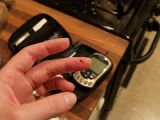
Ask For A Diabetes Test:
Type 2 diabetes is reaching epidemic proportions. More and more people suffer from type 2 diabetes than any other type. People who are likely to have more body fat are genetically predisposed to diabetes. A diagnosis can take 12 years, and by that time half of those diagnosed have diabetic complications. The initial symptoms of diabetes are thirst, tiredness, more frequent urination than usual and weight loss. The early symptoms can be so mild that you hardly notice them, but the impact of the disease can be devastating. Left untreated, diabetes can result in complications such as heart disease, stroke, blindness, kidney disease and nerve damage. If you are over 25 and have a family history of diabetes or are overweight, get your blood sugar levels tested to be on the safe side. You should also get the test done if your waist is 32 inches or above (women), or 35 inches or above (men). Once diabetes is diagnosed and treated – often with a combination of medicines and lifetsyle changes – it can be controlled and complications will be reduced.
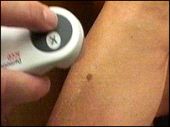
Get Your Moles Checked:
Having lots of moles (50-100) or multiple unusual moles (larger than normal, with an irregular border and of an uneven color) increases your risk of melanoma (skin cancer), so check them regularly. Signs to watch out for include a mole getting bigger, a mole with a ragged outline or one with a mixture of different shades of brown and black. If a mole becomes inflamed or starts to bleed or itch, get it checked out. If you are fair-skinned and burn easily, you are also more at risk. Some private clinics offer mole checks, but find out about the type of screening they use and whether the people doing it are medically qualified before you pay – if in doubt, talk to your GP. If you have a suspicious mole, your GP may refer you to a specialist clinic to have it examined and removed – early melanomas that haven’t spread can be removed surgically and won’t need any further treatment.
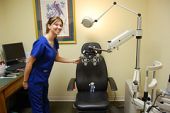
Make An Eye Appointment:
Four out of 10 of us rarely have our eyes checked, but a test can detect far more than just vision problems such as glaucoma, cataracts and muscular degeneration. An eye test can pick up signs of life-threatening diseases. Diabetes shows up in the leakage of blood vessels in the retina or in irregularities in your vision. High cholesterol can be seen from the hardening of the retinol blood vessels and high blood pressure from possible leakage of the blood vessels in the back of the eye and an irregular hardening of the vessels. Anyone over 40 should have their eyes tested every two years or annually if there’s a family history of glaucoma, if they are diabetic or more than 70 years old.
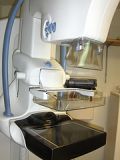
Ask For A Mammography:
Breast cancer is on the rise all over the world. With more and more women taking to careers certain factors have come into play that were not so pronounced earlier. An older age for a first childbirth, fewer children, and a shorter duration of breast-feeding all increase the probability of breast cancer. This is because of a prolonged exposure to the oestrogen in our bodies. Pregnancy and lactation interrupt the continuous production of oestrogen and women who breastfeed are also less likely to have the disease. An early diagnosis can go a long way in treating the disease. Though self examination of breasts is advised, few women actually do it. A mammography (a specialised x-ray) can help show up any abnormal shadows and cysts that could be the beginning of cancer.
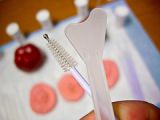
Undergo A Pap Smear Test:
Cervical cancer kills more women annually than childbirth. Cancer of the cervix – at the base of the uterus – is the second most common form of cancer among women. It is caused by a sexually-transmitted virus that leads to lesions on the cervix. If left untreated, those lesions develop into cervical pre-cancers and cancers early, increasing the probability of full cure. Some of the factors that increase the risk of cervical cancer include first sexual intercourse before 15 years of age and having too many sexual partners. It is a good idea to get your first Pap smear test, within three years of becoming sexually active. Even smoking puts you at risk because it produces chemicals that can damage cervical cells, thus reducing their ability to fight infections. It is generally advised to have the test done after childbirth and then once every two years for women above 35 years of age.